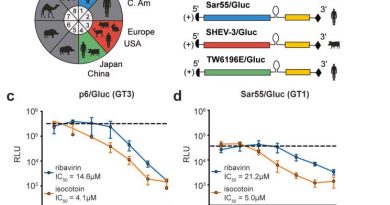Occurrence and antimicrobial resistance of zoonotic enteropathogens in gulls from southern Europe
Science of The Total Environment
Abstract
Campylobacter spp. and Salmonella spp. are the two most frequent zoonotic bacteria involved in human enteric infections in the European Union. Both enteropathogens have been isolated from a diversity of wild birds in Northern Europe, but there is limited information about gulls as potential reservoirs in Southern Europe. A broad sampling of fledglings from nine colonies of yellow-legged gull (Larus michahellis, N = 1222) and Audouin’s gull (Larus audouinii, N = 563) has been conducted in Spain and Tunisia during the late chick-rearing period. Overall, the occurrence of Campylobacter spp. and Salmonella spp. was 5.2% (93/1785, CI95%: 4.2–6.2%) and 20.8% (371/1785, CI95%: 18.9–22.7%), respectively. The most predominant Campylobacter species was C. jejuni (94.6%). A high diversity of Salmonella serovars was isolated and the most frequent were those also reported in human outbreaks, such as Salmonella Typhimurium. A high proportion of Campylobacter and Salmonella isolates showed resistance to at least one antimicrobial agent (20.2% and 51.5%, respectively), while 19.2% of Salmonella isolates were multidrug-resistant. These results show the relevance of gulls as reservoirs of Campylobacter and Salmonella by maintaining and spreading these bacteria, including resistant and multidrug resistant strains, in the environment. Our results suggest that gulls can serve as sentinel species for antibiotic pressure in the environment.




